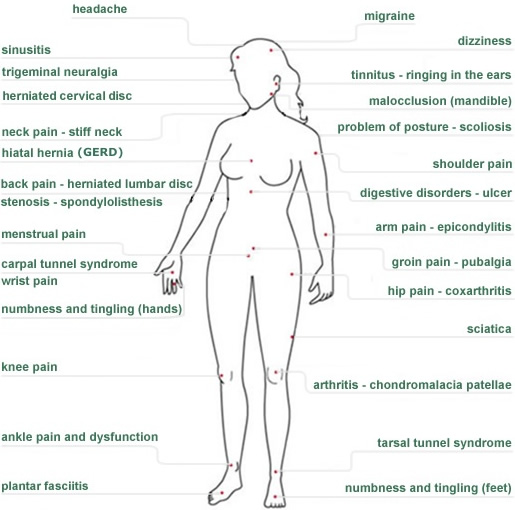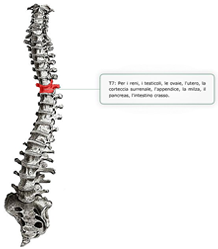SIBO & Low Back, Hip, and Knee Pain
SIBO & Low Back, Hip, and Knee Pain
SIBO causes bloating, gas, and other digestive issues. It can also create musculo-skeletal pain in the form of low back, hip, or knee pain.
Muscle-Organ Association
Our organs and glands are neurologically tied to specific muscles in our body. When there is trouble with an organ or gland, it can “short-circuit” its associated muscle. The small intestine relates to the quadriceps and abdominal muscles, which support the pelvis and the knees. Problems brewing within the small intestine is often the root cause of low back, hip, and knee conditions.
The Ileocecal Valve (ICV)
The diagnosis of Small Intestine Bacterial Overgrowth or SIBO has become widespread in recent years, however Applied Kinesiologists have been treating this condition for decades. During the early 1970s, Applied Kinesiologists developed techniques to treat what became known as the "Ileocecal Valve Syndrome."
The Ileocecal Valve (ICV) is a sphincter muscle between your small and large intestines. Its function is to hold material in your small intestine until digestion is complete. The small intestine is equivalent to the kitchen area of your bowel because it is where most food absorption takes place. Once the process is complete, the waste material must be removed from the kitchen area and moved into the garbage area (large intestine).
Problems occur when the ICV remains open when it should be closed. This allows retrograde movement of waste material from the large intestine into the small intestine. Why does this happen? The primary reason is sugar and refined carbohydrates, although there are many contributing factors.
SIBO
Good bacteria in the large intestine bolsters immunity and prevents inflammation. While this bacteria is welcome in the large intestine, it becomes problematic if it makes its way into the small intestine. But why would that happen?
Bacteria will migrate upward into the small intestine if there is sugar and undigested starches to feed off of. Over time, this bacteria colonizes in the small intestine, causing problems whenever we eat. The food we ingest encounters a type of bacteria sooner than it is supposed to because this bacteria belongs in the large intestine, not the small intestine. Undigested carbohydrates then begin to ferment and create gas, bloating, and pain. Over time, the lining of the gut becomes inflammed and cause "leaky gut." A person may also develop multiple food senisitivities that they've never had before.
Diagnosis and Treatment
In Applied Kinesiology, we assess diet and symptoms carefully. When a person experiences bloating after eating, SIBO or SIFO (Small Intestinal Fungal Overgrowth) must be ruled out. Using muscle testing and homeopathic vials, Applied Kinesiologists can differentiate which type of microbe is predominant, and what remedies are needed to neutralize it.
The application of manual therapy is a critical component for dealing with SIBO, and it is the part that most other professions leave out. Chiropractors using Applied Kinesiology treat the reflex points and adjust the spine, thereby bolstering immune function and increasing peristalsis. Patients feel better as digestion improves and overall health is restored.

 SCHEDULE AN APPOINTMENT
SCHEDULE AN APPOINTMENT









